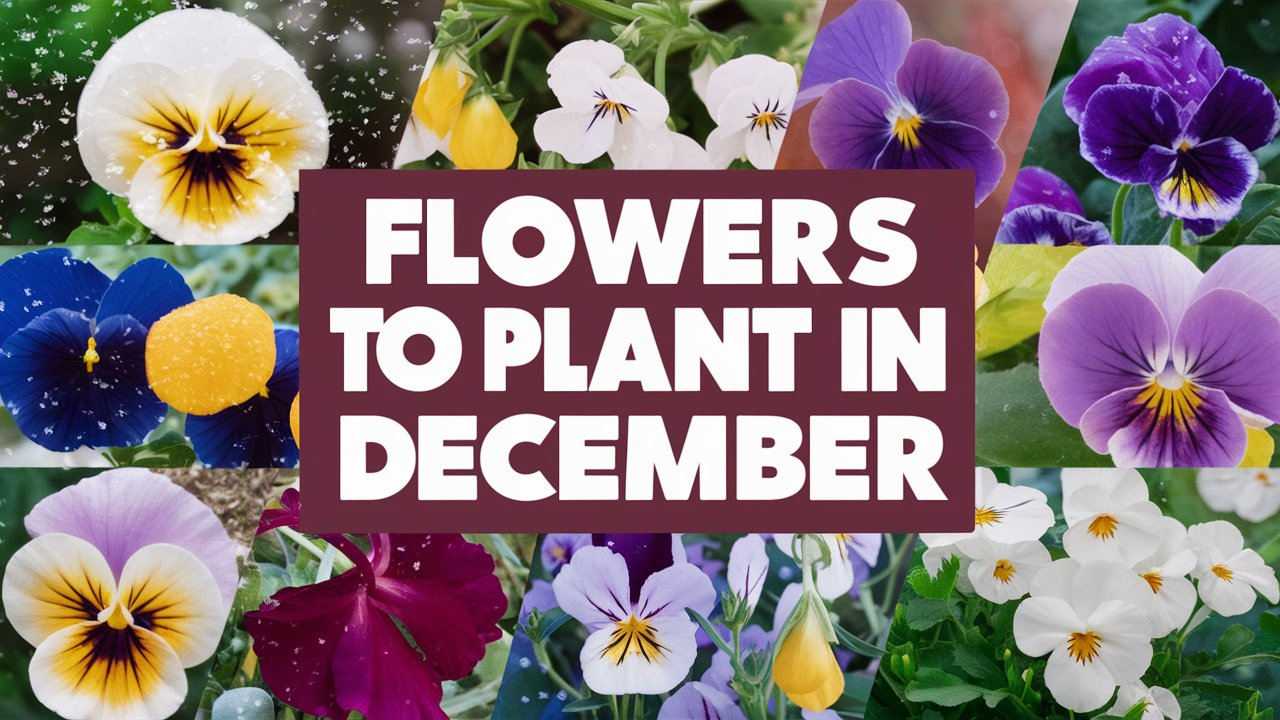As the cold of December sets in, many gardeners may think that flower planting is off-limits until spring. However, there are several hardy blooms that can add color and life to your winter landscape.
Violas And Pansies
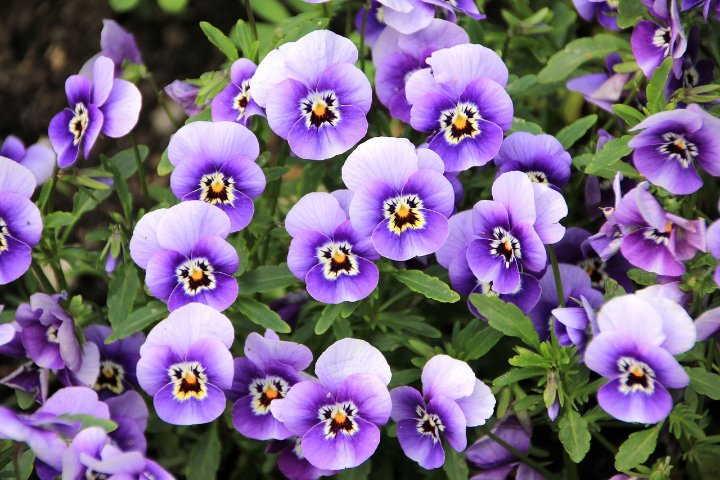
Violas and pansies are beloved for their vibrant colors and cheerful faces, making them perfect for brightening up wintry gardens. These flowers can often withstand frost, making them a reliable choice for December planting. Both species belong to the genus Viola, and they are available in an almost limitless array of colors, from striking purples and yellows to soft pastels and bi-color varieties.
When planting in December, choose a sheltered location, as these flowers appreciate light but can be sensitive to heavy winds. Consider covering them with a layer of mulch to help insulate the soil and maintain moisture. With care, pansies and violas will bloom throughout the winter in milder climates and will continue to thrive as the cooler months give way to spring, often providing one of the earliest floral displays in the garden.
Forsythia
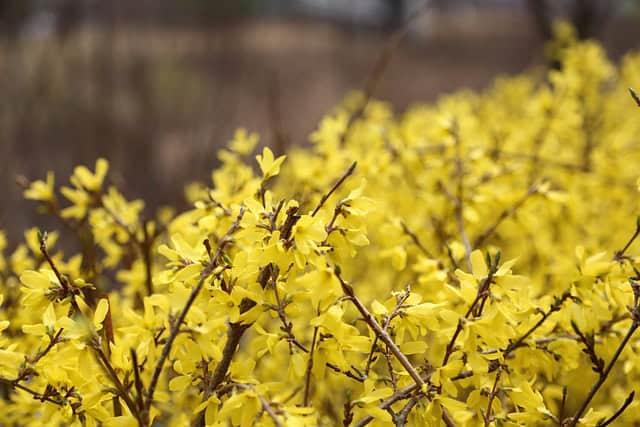
Forsythia is a deciduous shrub known for its bright yellow blossoms that herald the arrival of spring. While many traditional flower plantings focus solely on flowering perennials or annuals, forsythia brings a different kind of beauty to your garden. Planting forsythia in December, although not a traditional flowering method, can be incredibly beneficial. This is an ideal time to transplant or establish new forsythia plants, especially in regions where winters are milder.
The key to successfully planting forsythia in December is to ensure the roots are planted deep enough to take advantage of the insulation provided by the soil. Once established, these hardy shrubs will thrive and produce a spectacular display of yellow flowers in early spring, making them a worthwhile addition for any gardener. They also act as a natural barrier, helping to define garden boundaries and providing a serene retreat.
Bachelor’s Buttons
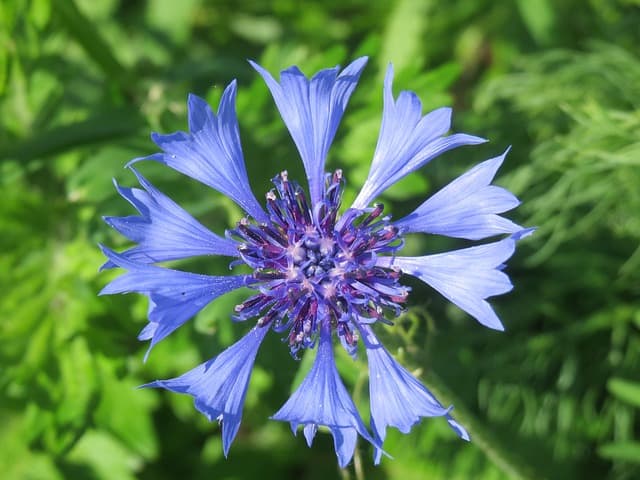
Also known as cornflowers (Centaurea cyanus), bachelor’s buttons are a charming and resilient flower that can introduce splashes of blue color to your December garden. These annuals are incredibly versatile and can grow in an array of soil types, which makes them suitable for various gardening settings. December planting can be particularly effective in areas where mild weather allows for earlier blooms.
When sowing bachelor’s buttons in December, consider starting them indoors if you live in areas prone to heavy frost. Transplanting them outdoors once the danger of extreme cold has passed can lead to early blooms as they are among the first flowers to blossom in spring. Their strong, slender stems and vivid colors can create a stunning contrast against winter backdrops, capturing the essence of resilience in the garden. Plus, bachelor’s buttons attract pollinators, making them a beneficial addition to your ecosystem even in winter.
Ornamental Kale
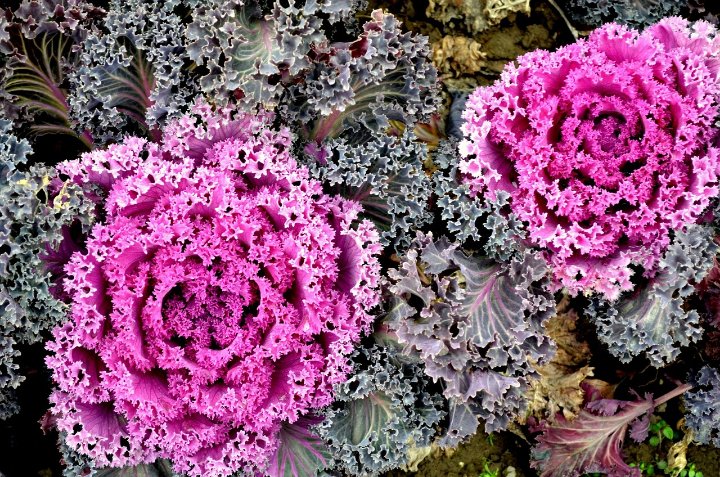
Ornamental kale, known for its impressive rosette shapes and vibrant coloration, is an excellent winter flower that can withstand low temperatures. Unlike edible kale, its primary appeal lies in its ornamental qualities rather than its taste. These striking plants feature richly colored leaves that can range from deep purple to bright white, often with frilled edges that add a fascinating texture to garden beds or containers.
December is a fantastic time to plant ornamental kale, particularly in regions with milder winters. When planting, make sure to position them in well-draining soil with full sun exposure, which will improve their coloration and overall growth. They’re particularly beautiful when planted in clusters, as the contrasting leaf colors can create a stunning tapestry against a backdrop of winter whites and grays. Additionally, ornamental kale is typically very hardy and can continue to thrive even under a blanket of snow, making it a reliable choice for wintry decor.
Delphinium
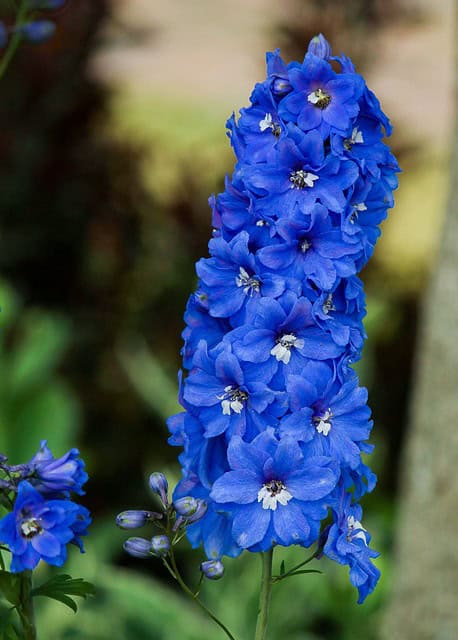
Delphiniums are known for their tall spikes covered in large, showy flowers and are a gardener’s favorite for vertical interest and color. Though traditionally a summer bloomer, December can be an optimal time for preparing the ground for these exquisite plants. In many climates, planting delphinium seeds indoors or starting them in a greenhouse during December can yield robust seedlings that are ready for transplanting in the spring.
Ensure that the soil is rich and well-draining, as delphiniums prefer a fertile environment. When the time comes to plant them outdoors, these flowers will need to be placed in an area with full sun, typically enjoying six or more hours of direct light each day. The anticipation of watching these magnificent blooms—often in alluring shades of blue, violet, and white—rise during late spring or early summer can be a delightful incentive during the cold December days.
Primrose
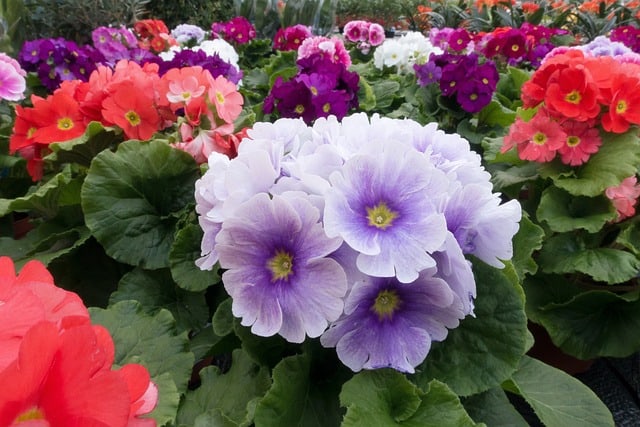
Primroses are one of the most cherished flowers for winter gardens, known for their ability to bring gentle pops of color to otherwise drab landscapes. These hardy perennials are especially valued for their early blooms, often emerging while the ground is still cold. Planting primroses in December can lead to a beautiful burst of color as soon as spring arrives, making them a favorite among enthusiasts eager to cherish every sign of life after winter.
When setting out primrose plants or seeds, choose a site that receives full to partial shade, as they thrive in cooler conditions and can sulk if exposed to too much sun. The soil should be well-draining, rich in organic matter, to support their growth. Primroses also benefit from regular watering, particularly in drier climates, as they require consistent moisture to flourish. With care and proper placement, these lovely plants will not only survive the chill of winter but will paint your garden with bright colors when the warmer days finally grace your area.
Poppies
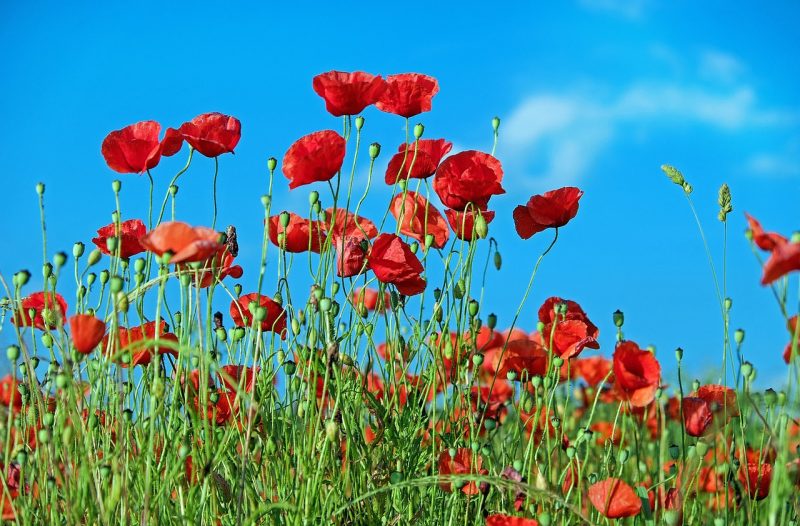
Poppies are a stunning choice for any garden, known for their delicate, paper-like petals and vibrant colors. While many people associate poppies with late spring and summer blooming, December is an excellent time to start preparing for their cultivation by planting seeds, especially in zones with milder climates. Observing their growth from seed to flower can be incredibly satisfying, as poppies are typically low-maintenance and resilient.
When sowing poppy seeds in December, it’s advisable to choose a well-drained area that receives full sun. Poppies thrive in poor soil, which makes them ideal for areas where other plants might struggle. After planting, a light cover of mulch can help to protect the seeds from harsh winter temperatures while maintaining moisture. The anticipation of their striking blooms—available in hues of red, orange, and purple—will make any garden enthusiast excited for the arrival of spring. Moreover, many species of poppies also attract pollinators, contributing to the health of your garden ecosystem.
Calendula
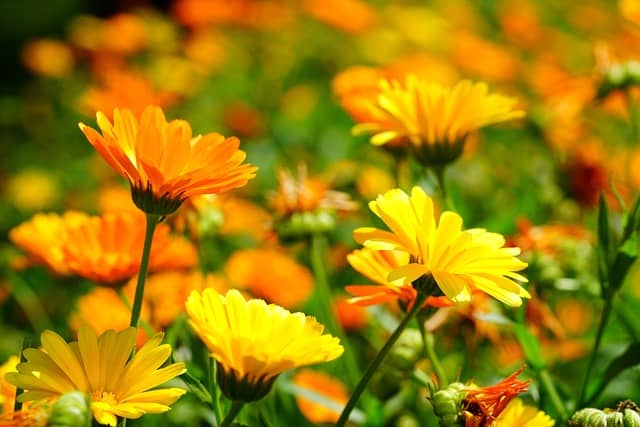
Calendula, commonly known as pot marigold, is a versatile flower that thrives in cooler temperatures, making it a perfect candidate for December planting. With their bright yellow and orange blooms, calendulas can brighten any winter garden and are often used for culinary and medicinal purposes as well. These charming flowers are known for their ability to flower continuously, attracting beneficial insects while repelling pests, thus improving the overall health of your garden.
For successful planting, consider opting for well-drained, fertile soil and a location that receives around six hours of sunlight each day. Calendula seeds can be sown directly into the ground or started indoors and later transplanted. They generally germinate quickly and give you a burst of cheerful color in the early spring, often surviving through light frosts. Additionally, the petals are edible, allowing you to incorporate them into salads or use them as garnishes, making this flower functional as well as beautiful.
Bluebells
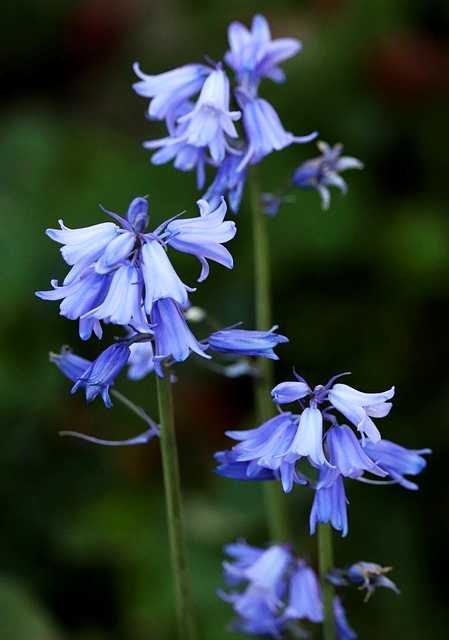
Bluebells, recognized for their enchanting drooping blooms and sweet fragrance, are an iconic flower for woodland gardens and naturalized areas. While they tend to thrive best in moist, shaded environments, they can also adapt to various garden settings. December is an ideal time to plant bluebell bulbs, particularly in climates where winter conditions are moderate.
When planting bluebell bulbs, choose a location with dappled sunlight and organic-rich soil to accommodate their growth preferences. Position them several inches apart to allow for their eventual spreading. These perennial beauties will establish themselves well during the winter months, resulting in stunning displays of blue flowers in the spring. Bluebells are known for their natural charm and ability to attract pollinators, bringing a sense of vibrancy and life to your garden landscape.
Snapdragons
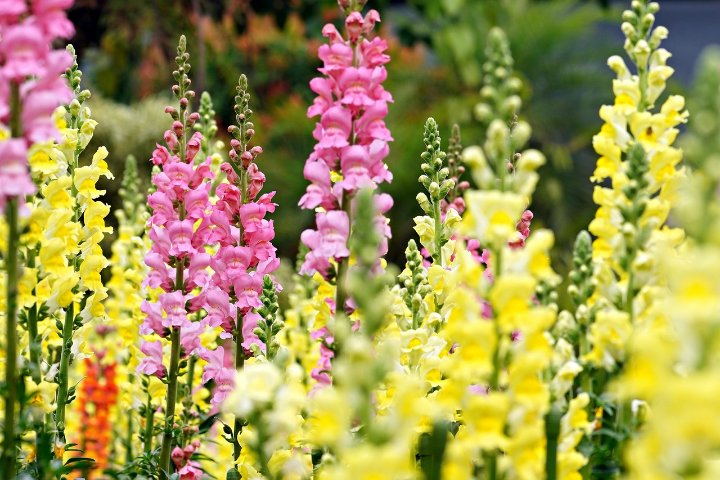
Snapdragons are perhaps one of the most versatile and beloved annuals, noted for their whimsical, dragon-shaped flowers that come in an array of brilliant hues. These flowers can be started in December, particularly in regions with milder winters, making them an excellent choice for holiday plotting or early spring transplants. Their upright growth habit and ability to bloom throughout the season make them a staple in many gardens.
When planting snapdragons, consider initiation indoors in seed trays, as this allows for controlled growth in a warm environment before the last frost. They thrive in full sun to partial shade and prefer well-drained soil with moderate fertility. Additionally, snapdragons are valued for their long blooming period, often continuing to delight gardeners with flowers well into summer. While often considered an annual, in some regions they can act as short-lived perennials, granting you the chance to enjoy them for multiple growing seasons.
Winter Jasmine
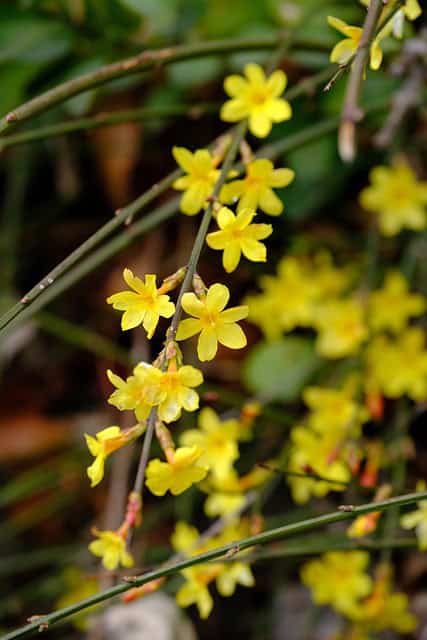
Winter Jasmine (Jasminum nudiflorum) is the embodiment of resilience in winter gardens. This deciduous shrub is famed for its bright yellow flowers that bloom even in the depths of winter, bringing a touch of cheerful color when most other plants are dormant. December is an ideal time to plant winter jasmine, either as established plants or through cuttings indoors.
Positioning winter jasmine in well-drained soil with plenty of sunlight allows it to thrive, though it can tolerate partial shade as well. It makes an excellent ground cover, cascading beautifully over walls and along pathways, creating a soft carpet of green adorned with blooms. Once established, winter jasmine requires minimal maintenance, and its ability to withstand cold temperatures and still produce flowers makes it a reliable choice in any winter landscape. The addition of this striking plant not only enhances visual appeal but also brings fragrance to your garden when most scents are rare.
Hellebores
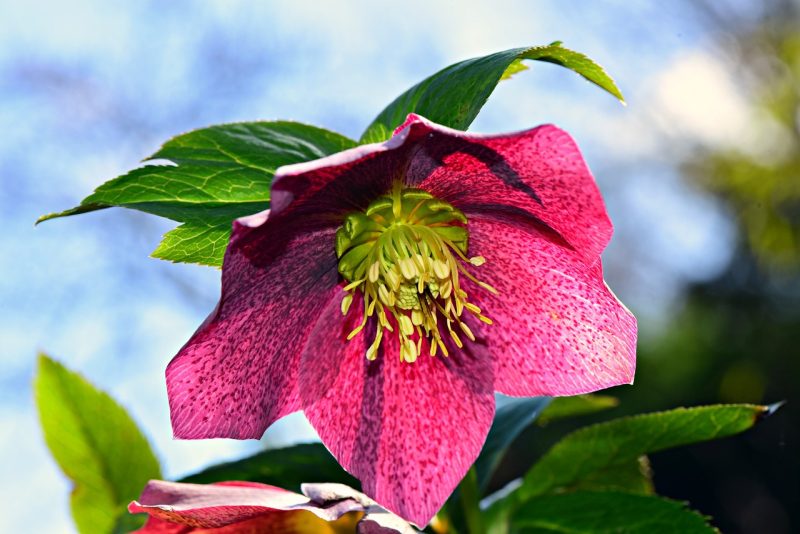
Hellebores, often referred to as the Christmas rose or Lenten rose, are perennial favorites for winter gardens due to their exquisite blooms and early flowering season. With their nodding, cup-shaped flowers, which can vary from white and pink to deep purples and greens, hellebores bring color to the garden even amidst winter’s chill. Planting hellebores in December allows for a wonderful early spring display because they typically begin blooming in late winter and can last well into spring.
When planting hellebores, choose a shaded to partially shaded area with rich, well-draining soil to mimic their natural woodland habitat. These hardy perennials are notable for their drought tolerance once established, which adds to their low-maintenance appeal. Additionally, hellebores are excellent at attracting pollinators, making them not only a beautiful addition to your garden but also a beneficial one. Their unique ability to thrive in cooler temperatures means their buds often emerge while there’s still snow on the ground, creating a marvelous juxtaposition that contributes to the enchanting look of winter gardens.
Irises
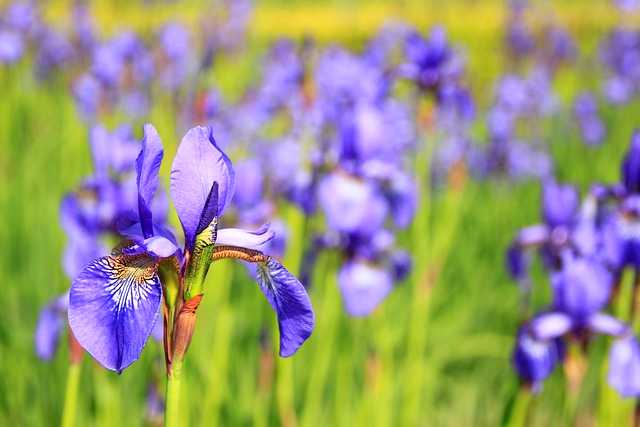
Irises are celebrated for their intricate flower structures and wide variety of colors, ranging from bold blues to soft whites and radiant yellows. These perennial favorites can be planted in December in many regions, especially warmer climates, where they establish roots before the onset of the spring blooming season. Whether you’re working with bulbous types or bearded irises that spread by rhizomes, you can expect them to deliver a commanding presence in early spring gardens.
When planting irises, select a location with full sun and well-drained soil, as they do not tolerate waterlogged conditions. The ideal depth for planting iris bulbs is about 3 to 4 inches deep. A well-timed December planting allows the bulbs to settle into the soil, which they’ll benefit from when the temperatures start to rise. It’s also worth noting that irises may produce stunning blooms shortly after the last frost, adding a refreshing splash of color to an otherwise subdued winter landscape. Additionally, many iris varieties attract pollinators like bees, enhancing the ecological diversity of your garden.
Hardy Cyclamen
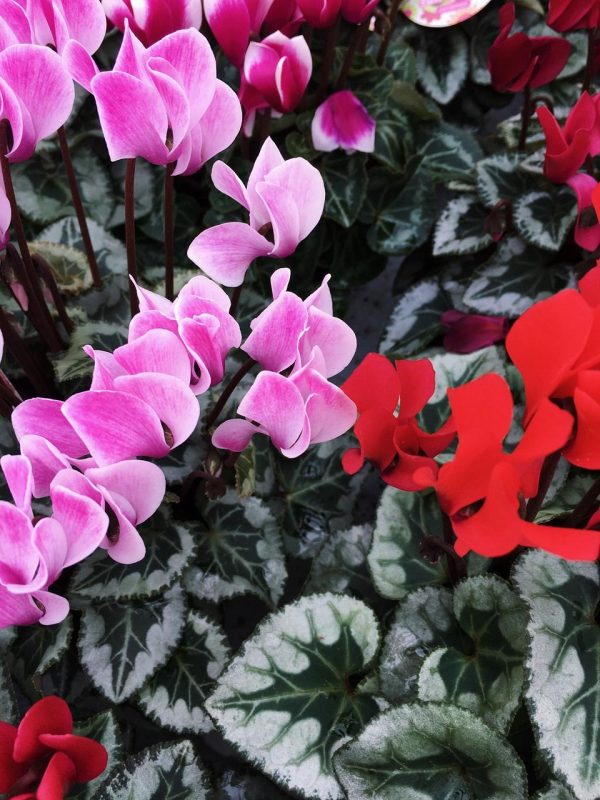
Hardy cyclamen, specifically Cyclamen hederifolium, brings elegance to winter gardens with its charming, heart-shaped leaves and delicate flowers that rise on slender stems. This perennial plant is perfect for December planting, particularly in cooler climates, as it flourishes in shaded areas. The twisting petals of the flowers often appear in shades of pink, white, or purple, adding visual interest during the colder months when few plants are blooming.
When preparing to plant hardy cyclamen, focus on creating a woodland-like environment with rich, well-drained soil that retains some moisture. You can scatter the tubers across a shaded garden bed to achieve a naturalized look, as they will spread over time. While these cyclamen are winter bloomers, you’ll be pleased to find that their foliage remains attractive throughout the year, with the leaves often developing beautiful patterns. Hardy cyclamen also do well under trees or shrubs, making them an excellent choice for filling those tricky spots in the garden where other plants might not thrive.
Crocuses
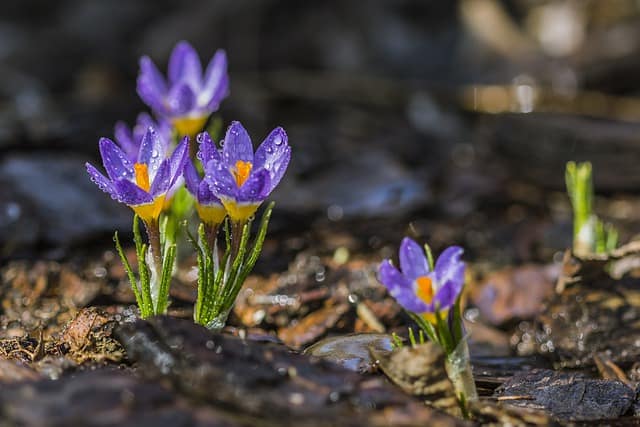
Crocuses are a delightful harbinger of spring, known for their early blooms and vivid colors that can emerge even through a blanket of snow. Planting crocus corms in December allows them to establish themselves in the soil before winter conditions set in, ensuring they’ll burst forth in vibrant displays when the weather warms. These flowers are often the first to bloom in the garden, and their cheerful faces can bring joy and hope as winter slowly wanes.
For successful crocus planting, choose a sunny or partially shaded location with well-draining soil. Plant the corms about 3 to 4 inches deep and a few inches apart to allow for spreading. Not only are crocuses visually stunning, but they also play a crucial ecological role—they are among the first blossoms to provide nectar to honeybees emerging from winter hibernation. With their open petals capturing sunlight, crocuses become a beacon of warmth and renewal, making them a perfect addition to any winter garden.
Witch Hazel
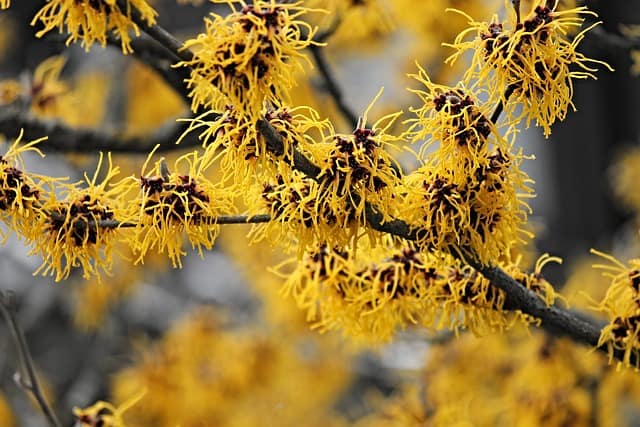
Witch Hazel (Hamamelis virginiana) is a truly remarkable plant known for its stunning, frilly flowers that appear in late winter, often before the leaves unfurl. This deciduous shrub displays blossoms in shades of yellow, orange, and even red, giving a cheerful appearance against the backdrop of a bare winter garden. Planting Witch Hazel in December allows it to settle into its new environment and take advantage of a mild winter before its vibrant display emerges.
Witch Hazel thrives in well-drained, moist soil and appreciates bright, open areas where it can soak up sunlight. This hardy plant is also an excellent choice for those looking to attract wildlife, as its early blooms provide vital nectar for pollinators that emerge during the warmer spells of winter. Additionally, Witch Hazel is recognized for its historical medicinal uses, with extracts made from its bark and leaves often employed for their soothing properties. With its beautiful blooms and practical benefits, Witch Hazel is a multifaceted addition to any winter garden.
Snowdrops
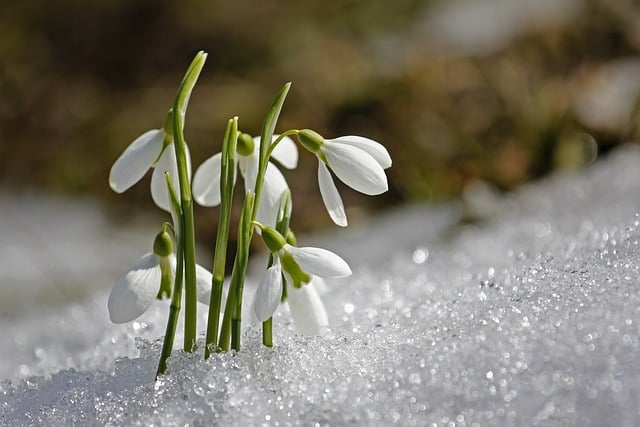
Snowdrops (Galanthus nivalis) are iconic for their delicate, nodding white flowers that bravely emerge through the snow. These perennial bulbs can be planted in December, as they require a period of cold stratification to bloom effectively in early spring. Known as one of the first signs of spring’s arrival, snowdrops bring a whisper of hope and warmth to the winter landscape, gracefully lifting the spirits of gardeners and nature lovers alike.
When planting snowdrops, choose a spot with moist, well-drained soil in partial shade or full sun. These bulbs should be buried roughly 3 inches deep and spaced a few inches apart to allow for natural spreading and clumping. Snowdrops are low-maintenance plants that require minimal care once established, making them perfect for naturalizing in woodland gardens or shaded areas. Aside from their aesthetic appeal, snowdrops are also known to be deer-resistant and can help enrich your garden’s biodiversity by attracting beneficial insects.
Winter Heath
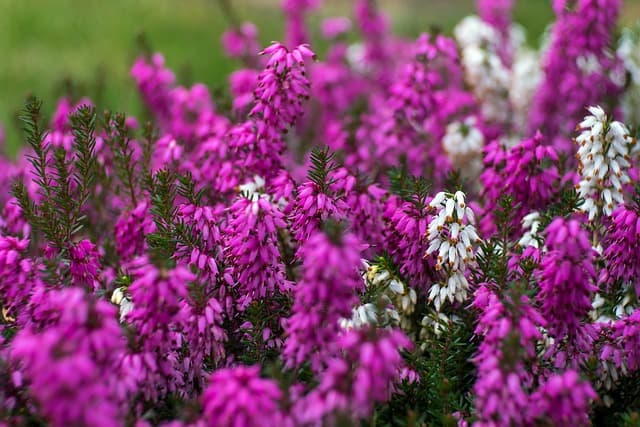
Winter Heath (Erica carnea), sometimes referred to as winter flowering heather, is a charming evergreen plant that provides vibrant color during the dreary winter months. Its pink, purple, or white blooms can appear as early as December and continue into the spring, adding a touch of cheer to your winter garden. The ability of winter heath to flower in winter makes it a popular choice for homeowners looking to maintain color and liveliness in their outdoor spaces.
This hardy plant prefers well-drained, acidic soil and full sun exposure. When planting in December, ensure that the chosen location provides shelter from harsh winter winds, which will help the plant thrive during its early blooming period. Winter heath is an excellent ground cover, ideal for slopes, borders, and rock gardens, where its blossoms can spread freely. Additionally, the evergreen foliage provides year-round interest, while its nectar-rich flowers attract bees and other pollinators, contributing to the health of your garden ecosystem.
Camellias
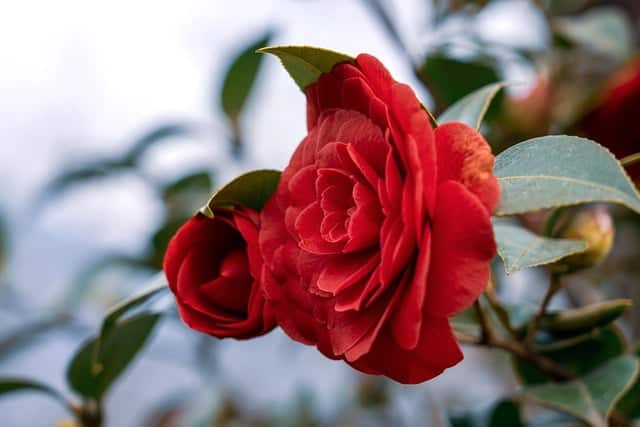
Camellias are celebrated for their stunning blooms and glossy green leaves, making them a favorite among winter gardeners. These evergreen shrubs can produce an abundance of flowers in shades of white, pink, and red, often starting their spectacular display as early as winter. Planting Camellias in December, particularly in milder climates, allows them to become established just in time for their winter and early spring blooms.
These plants thrive in well-drained, acidic soil and prefer partial shade, particularly if they’re planted in regions that experience intense afternoon sunlight. When selecting your planting site, ensure there is sufficient space for their growth, as some varieties can reach substantial size. Beyond their aesthetic appeal, Camellias can be used as a natural privacy screen or a foundation plant, contributing both beauty and functionality. Additionally, their flowers are a fantastic cut for arrangements, providing a touch of elegance to indoor spaces during the colder months.
Winter Aconite

Winter Aconite (Eranthis hyemalis) is a cheerful little bulb that often breaks through the snow to display its bright yellow flowers, typically blooming from late winter to early spring. Planting Winter Aconite in December allows the bulbs to acclimate to the colder soil temperatures, setting the stage for their stunning arrival as a herald of spring.
These small bulbs prefer well-drained soil and a location with partial to full shade. When planting, place the corms about 3 inches deep and a few inches apart, allowing them to multiply and naturalize over time. Not only do Winter Aconites provide a splash of sunny color at a time when gardens can feel sparse, but they also attract early pollinators, enriching the ecological balance of your garden. As they spread, these lovely flowers can create captivating drifts of golden-yellow that evoke warmth and cheer during the chill of winter.
Grape Hyacinth
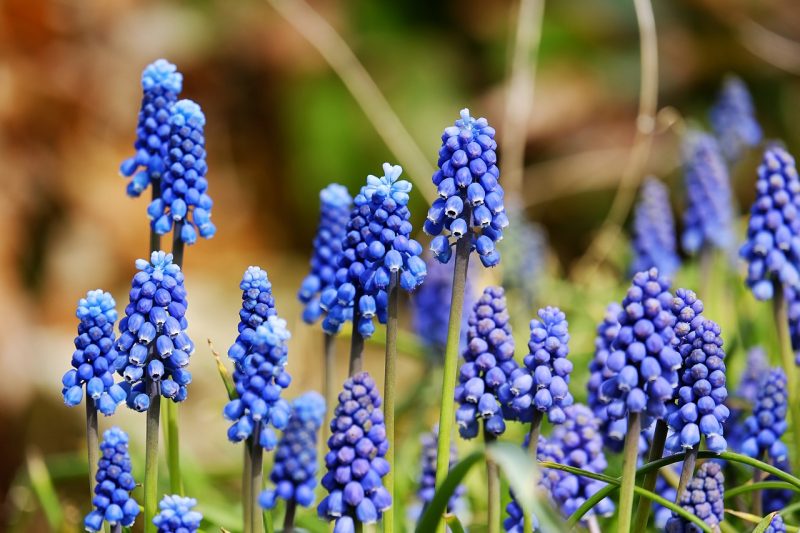
Grape Hyacinth (Muscari spp.) is another remarkable bulb to consider planting in December. Known for their dense clusters of blue, purple, or white flowers that resemble tiny grapes, these hardy bulbs are perfect for adding vibrant color to your winter and spring garden. Grape Hyacinths are excellent at naturalizing, meaning they will multiply over the years, creating a stunning display with minimal effort.
For optimal growth, plant Grape Hyacinth bulbs in well-drained soil in a sunny to partially shaded location. Bury the bulbs about 4 inches deep, ensuring they have enough space to develop a robust root system before blooming. These flowers not only display exceptional beauty but also have a sweet, pleasant fragrance that can enrich your garden’s aroma. Grape Hyacinths are also known to attract beneficial pollinators, contributing to the biodiversity of your garden while adding layers of color and texture.


